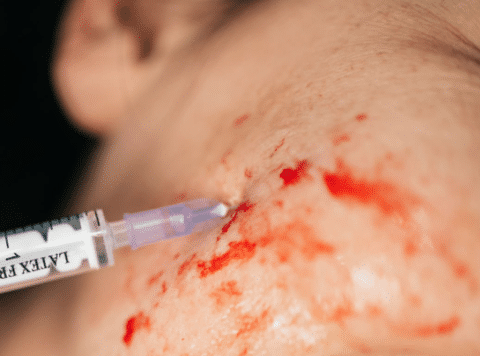- Introduction of HA
HA was first isolated from the vitreous humor of bull’s eye in 1934 by Prof. Meyer et al. In the 1940s, HA was isolated from tissues such as synovial fluid, umbilical cord, corpuscles and microorganisms such as streptococci. research on medical applications began in the 1960s, followed by applications in ophthalmology, orthopedics, etc. In the 1980s, with the development of technology and increased demand, industrial production of microbial fermentation HA began to appear and now occupies a dominant position. With the development of technology and in-depth research, HA is becoming more and more popular in the fields of cosmetic and regenerative medicine.
- Non-surgical cosmetic
Introduction to medical aesthetics. Medical aesthetic services aim to improve the appearance and/or eliminate the signs of ageing and include both surgical and non-surgical procedures, which are usually performed by registered medical professionals and medical specialists. Surgery can radically change/improve the appearance of the breasts, nose, eyes, eyelids, etc. Non-surgical medical aesthetics includes for injections, laser treatments, and other micropigmentation procedures. Injectable materials such as Botox, collagen, hyaluronic acid and autologous fat are used to reshape the face or body or for the purpose of wrinkle removal. Laser treatments use lasers to tighten deeper skin layers, remove pigment, or reshape the skin’s epidermis, remove hair and treat acne or reduce acne scars.
There is plenty of room for growth. The global medical aesthetic industry has always maintained strong growth momentum in recent years, and the revenue size of China’s medical aesthetic field increased from $2.8 billion in 2009 to $4.7 billion in 2013, with a compound annual growth rate of 14.2%, and is expected to grow to $9.1 billion in 2018, with its main increment coming from the non-surgical field as non-surgical procedures are more easily accepted. From the 2010 global cosmetic surgery industry statistics, the total amount China ranked third, but on a per capita basis China ranked second to last in terms of the number of HA injections per 10,000 people, along with the increase in disposable income, this figure will continue to rise.
- Cosmetic
HA can be used in a variety of microcosms, HA plays an important role in the dermis of human skin as a matrix, both for the overall maintenance of the tissue structure and for the transport between cells. HA is non-repulsive, compatible, moisturizing, and has a long degradation time, so it is widely used in many microplastic fields, which can raise the bridge of the nose, repair the tip of the nose, augment the cheeks, plump the lips, repair the lip shape, modify the chin, and also be used for wrinkle removal.
HA as a subcutaneous filler is widely used in the field of microplastic surgery, from defect repair to lip augmentation and wrinkle removal, etc. The age distribution is also wider, from teenagers to the elderly, mainly focused on 35-64 years old, with a target customer base expected to exceed 100 million, who have strong payment ability and high cosmetic demand.
The industry is more regulated. The beauty industry has traditionally been affected by counterfeit and shoddy products, and good industry norms are a strong guarantee of consumer trust. With the introduction of relevant policies and the strengthening of regulatory measures, the industry has ushered in a better time for development.
- Cosmetics
HA loss seriously affects skin health. Once the HA content of the skin is below a certain level, the water content will gradually reduce, so that the skin gradually aging, appear rough, wrinkles, loss of elasticity, so that skin health is affected, which is also one of the main reasons for the skin gap between the elderly and children and adolescents.
HA has multiple skin care effects. HA can promote the proliferation and differentiation of epidermal cells, scavenge free radicals, reduce the amount of ultraviolet light passing through, prevent and repair skin damage, and also improve skin growth conditions, provide a superior external environment for the synthesis of dermal collagen and elastic fibers, and enhance the supply of nutrients, while having an unparalleled skin feel, unique moisturizing activity and film-forming properties, so it is widely used in the cosmetic HA has been widely used in cosmetics.
HA is widely used in cosmetic products, and it is compatible with the water phase to thicken and emulsify the oil phase. It is the best natural moisturizing ingredient and is widely used in high-grade creams, lotions, masks, lotions, serums, cleansers, baths, lipsticks and other cosmetics, with a general addition of 0.05-0.5%. Moisturizing effect.








